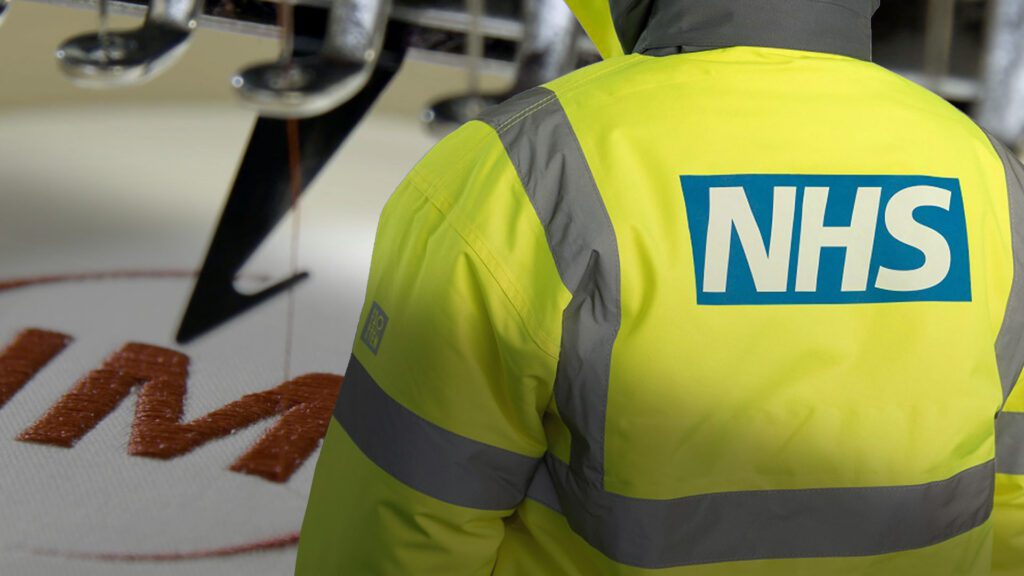Heatseal Vs Embroidery, what’s the difference?

The benefits of branded clothing and what it can do for your business, employees and customers are immeasurable really. When you consider that your team’s uniform very well might be the first impression of your business that a customer has, you don’t want to cut any corners when sourcing your garments.
When it comes to branding your clothing, Streamline has over 40 years of experience with in-house embroidery and heat seal so when you put your brand’s uniform and workwear in our hands you know it’s safe.
Find out the benefits and differences between embroidery and heat seal and the positives of branding your business’s clothing.
The Benefits of Embroidery
Before we go into the difference between embroidery and heat seal for your branded clothing, let’s talk about the benefits of embroidery.
First impressions count and one of the most obvious benefits of embroidered workwear is how professional and polished it can make the wearer look. Kitting your team out in a branded uniform establishes a level of trust and comfort in those who they meet, and embroidery takes that to the next level. It just looks great.
Embroidered apparel is a company benefit, it is high quality and makes people feel a part of a team. Providing your team with uniforms also of course reduces their spending on work clothing too.
In this period of low unemployment and employee attraction issues being talked about at every level, that’s a benefit you can offer
Durability is key for uniform garments so the quality of embroidery isn’t to be ignored. By choosing to embroider your logo, over other branding options, you can be sure you’ve chosen the highest possible quality for your design. Some printed designs can crack or flake with wear and tear, but embroidery remains perfect. Embroidery immediately gives a higher-end feel, a touch of luxury for your brand.

Taking it back to basics, embroidery is the art of decorating material by stitching thread in a pattern.
- Classic decoration technique
- High-value look
- Suitable for both flat and irregular surfaces
- Thread colours can match any logo
- High-impact stitch detail is possible
- Suitable for cotton, polyester, and fleece materials
For more on how we ensure a great embroidery result read this past blog.
When not to use embroidery
Avoid embroidery when you have a very large brand image or message over 150mm in width or height. Large brands need very large stitch count files which will be expensive and may possibly distort your brand message.
Also, while T-shirts can be embroidered, consider heat seal on these because it saves the risk of ‘puckering’ or giving a pinched appearance to the garment, and you’ll find heat seal branding is more cost-effective for cheaper garments.
Special care needs to be taken on dress shirts; we definitely do embroider large quantities of shirts but because of their fine material, use small versions of your brand with lower stitch counts where possible – again to avoid the puckered or pinched appearance.
Other garments like Hi-vis and waterproofs are generally best branded by other methods too.
And finally, never use an amateur or low reputation embroidery provider, there are plenty of experienced companies to save you from trying anyone unreputable – the result may disappoint and you risk losing brand reputation.
The Benefits of Heat Seal
Whilst embroidery has its many benefits and uses, not all garments lend themselves to branding by embroidery. Another technique for branding clothes is Heat Seal. Different garments suit different branding methods, for example, you wouldn’t want to heat seal waterproof garments because the protection on the outside of the garment is ruined by the heat of the press. These small considerations are something our team is well versed in advising and will be on hand to help with.
You might consider a Hi-Vis vest to be the perfect garment for heat seal branding. You wouldn’t normally embroider it, the holes would compromise the product’s integrity, but a heat seal safely brands and looks great at the same time.
Heatseal, much like embroidery, gives a professional look and a great first impression for company workwear but it varies in a number of ways. Heat seal is a cheaper option, as it’s less laborious, and is a lot faster.
Some of our clients find heat seal provides a more modern look over embroidery, though many choose a bit of both across their uniform and work wear choices. Heat sealing also allows for a detailed design with fine details.

Taking it back to basics, Heat seal is a branding technique where a logo or design is applied to the fabric by heat transfer.
- Waterproof
- Faster and less laborious
- Allows for flexibility and detail in design
- Any colour to match logos
- Applicable for cotton, polyester, and polycotton blend
Wrap up…
Embroidery and Heat Seal both have their place in the world of branded workwear and at Streamline we’re proud to have expertise in doing both in-house. The majority of our clients choose a little bit of both techniques for their clothing collections and find they end up with a well-curated and very professional-looking team across their business.
To talk about your branded clothing needs, contact our branding experts today.
